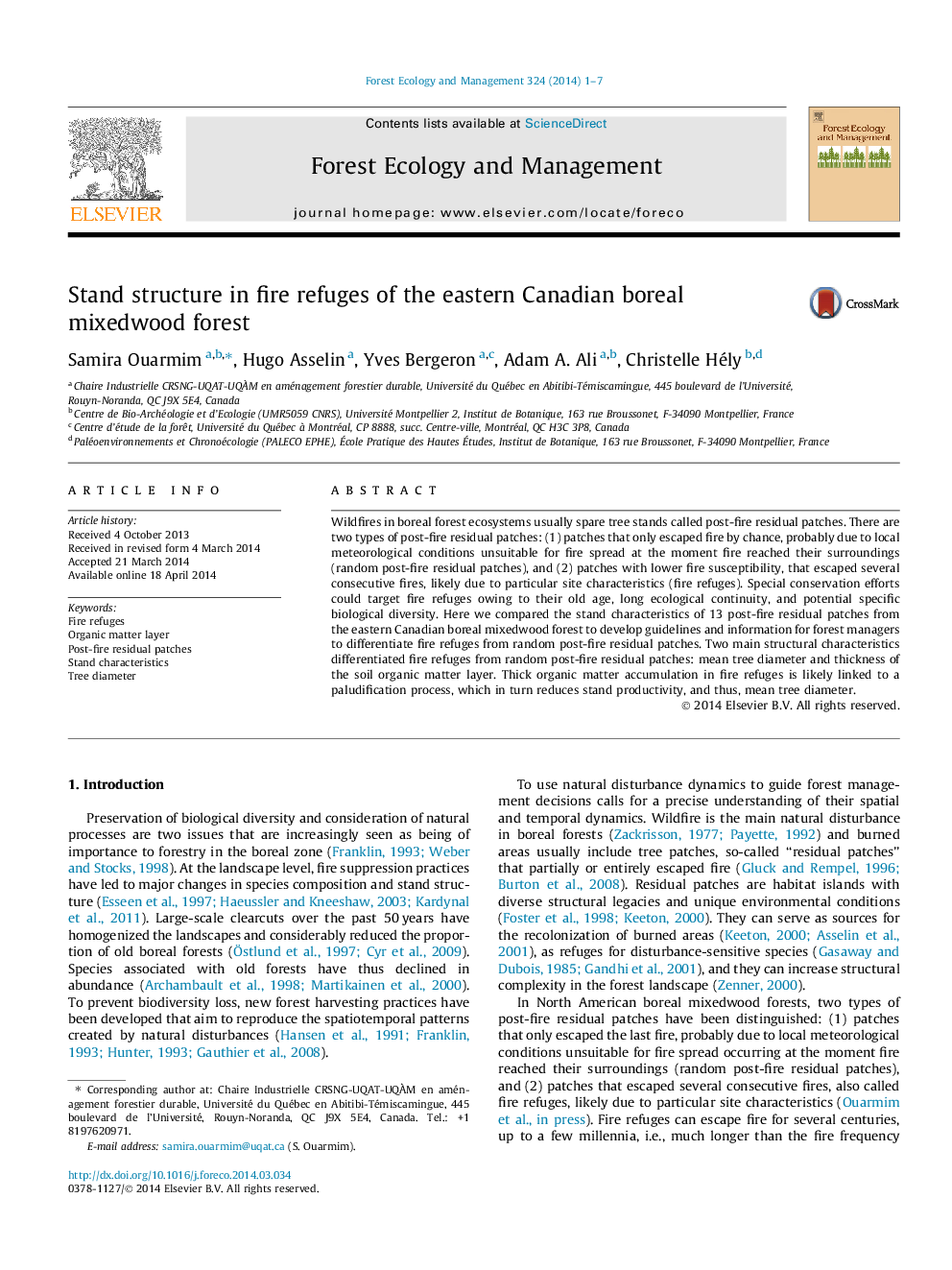| کد مقاله | کد نشریه | سال انتشار | مقاله انگلیسی | نسخه تمام متن |
|---|---|---|---|---|
| 86618 | 159200 | 2014 | 7 صفحه PDF | دانلود رایگان |
• Burned areas in boreal forests frequently include unburned tree patches.
• Some residual patches – fire refuges – can escape several consecutive fires.
• Fire refuges are potential biodiversity hotspots and should be protected.
• Differentiating fire refuges from random residual patches is crucial.
• Organic matter layer is thicker and tree diameter is smaller in fire refuges.
Wildfires in boreal forest ecosystems usually spare tree stands called post-fire residual patches. There are two types of post-fire residual patches: (1) patches that only escaped fire by chance, probably due to local meteorological conditions unsuitable for fire spread at the moment fire reached their surroundings (random post-fire residual patches), and (2) patches with lower fire susceptibility, that escaped several consecutive fires, likely due to particular site characteristics (fire refuges). Special conservation efforts could target fire refuges owing to their old age, long ecological continuity, and potential specific biological diversity. Here we compared the stand characteristics of 13 post-fire residual patches from the eastern Canadian boreal mixedwood forest to develop guidelines and information for forest managers to differentiate fire refuges from random post-fire residual patches. Two main structural characteristics differentiated fire refuges from random post-fire residual patches: mean tree diameter and thickness of the soil organic matter layer. Thick organic matter accumulation in fire refuges is likely linked to a paludification process, which in turn reduces stand productivity, and thus, mean tree diameter.
Journal: Forest Ecology and Management - Volume 324, 15 July 2014, Pages 1–7
